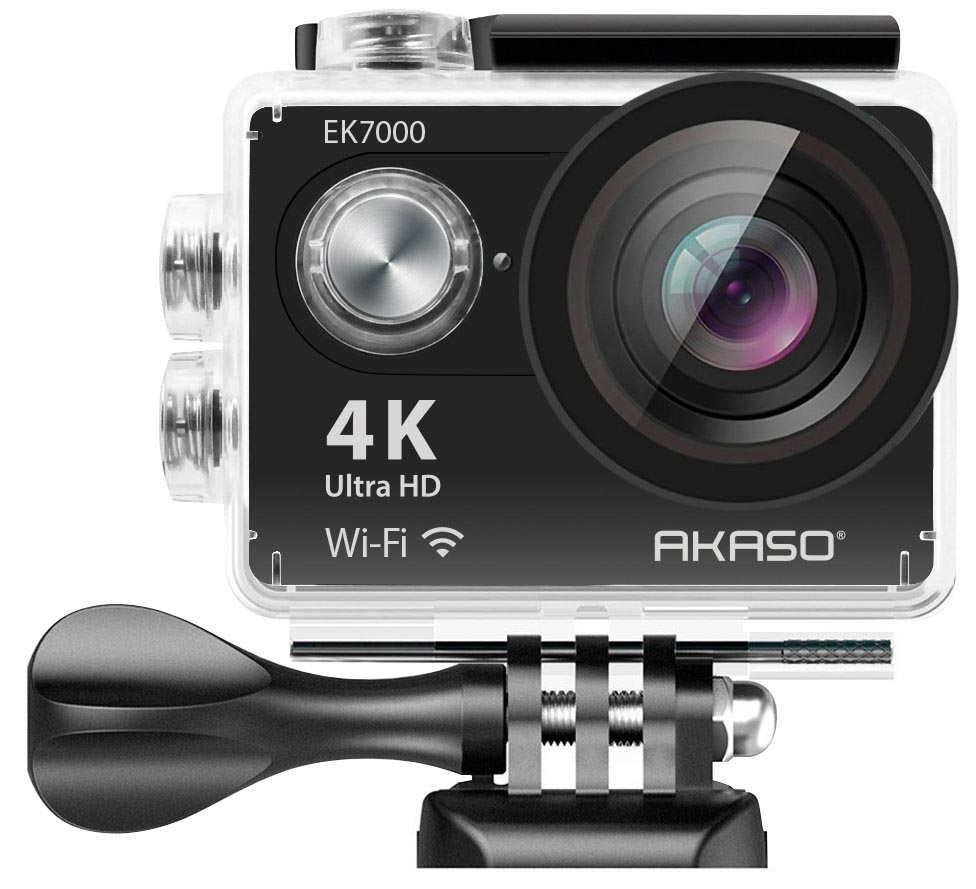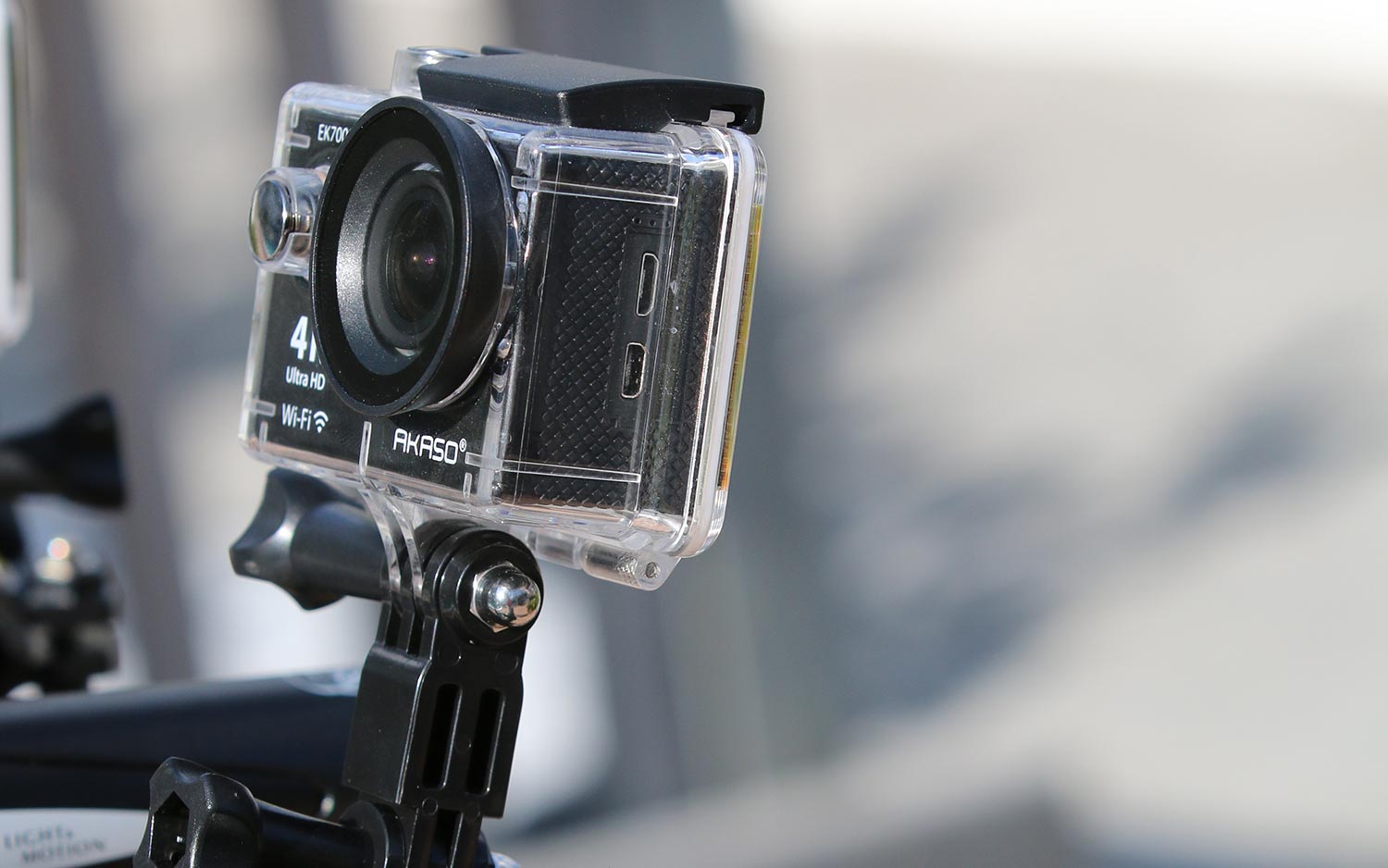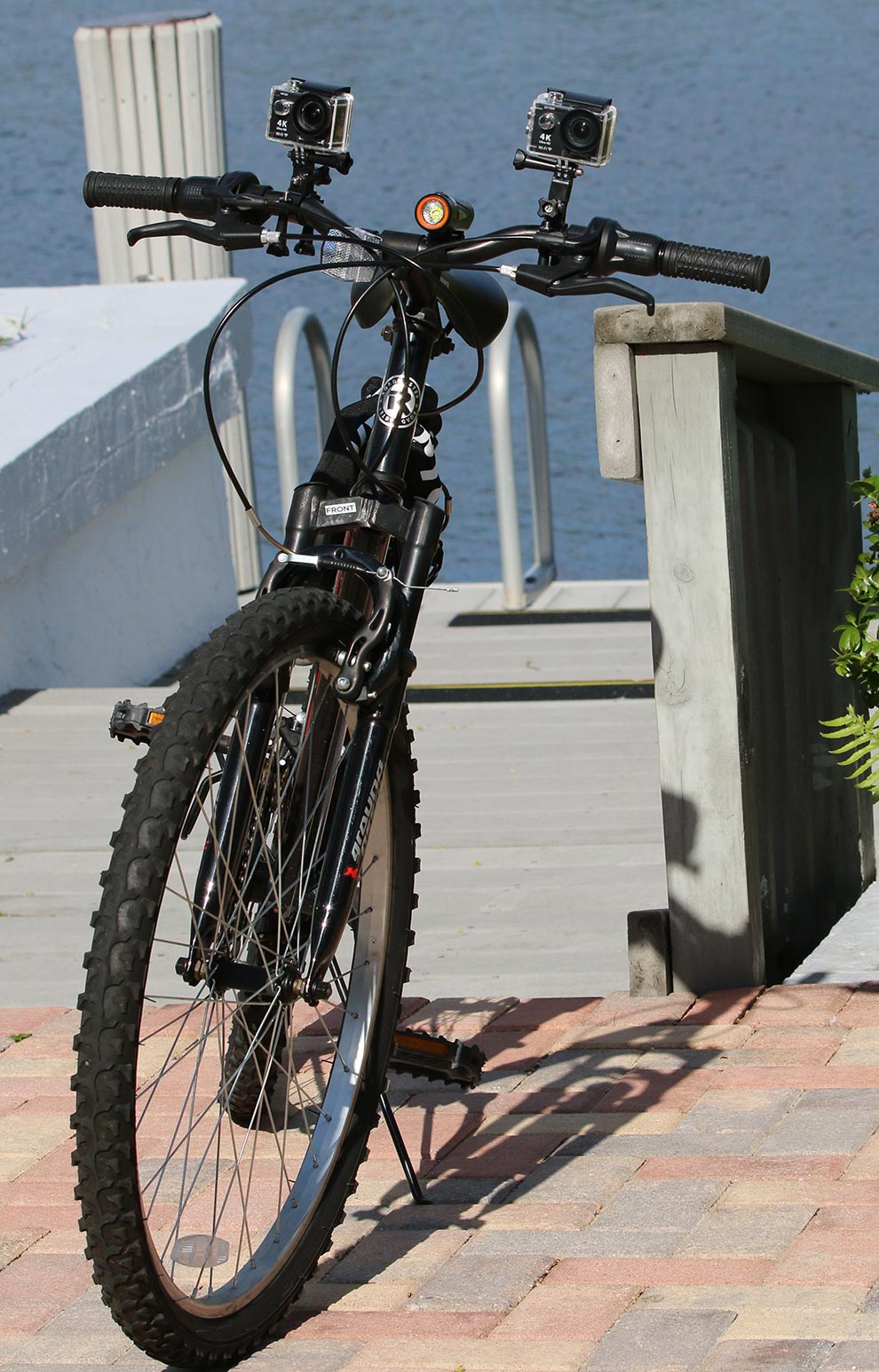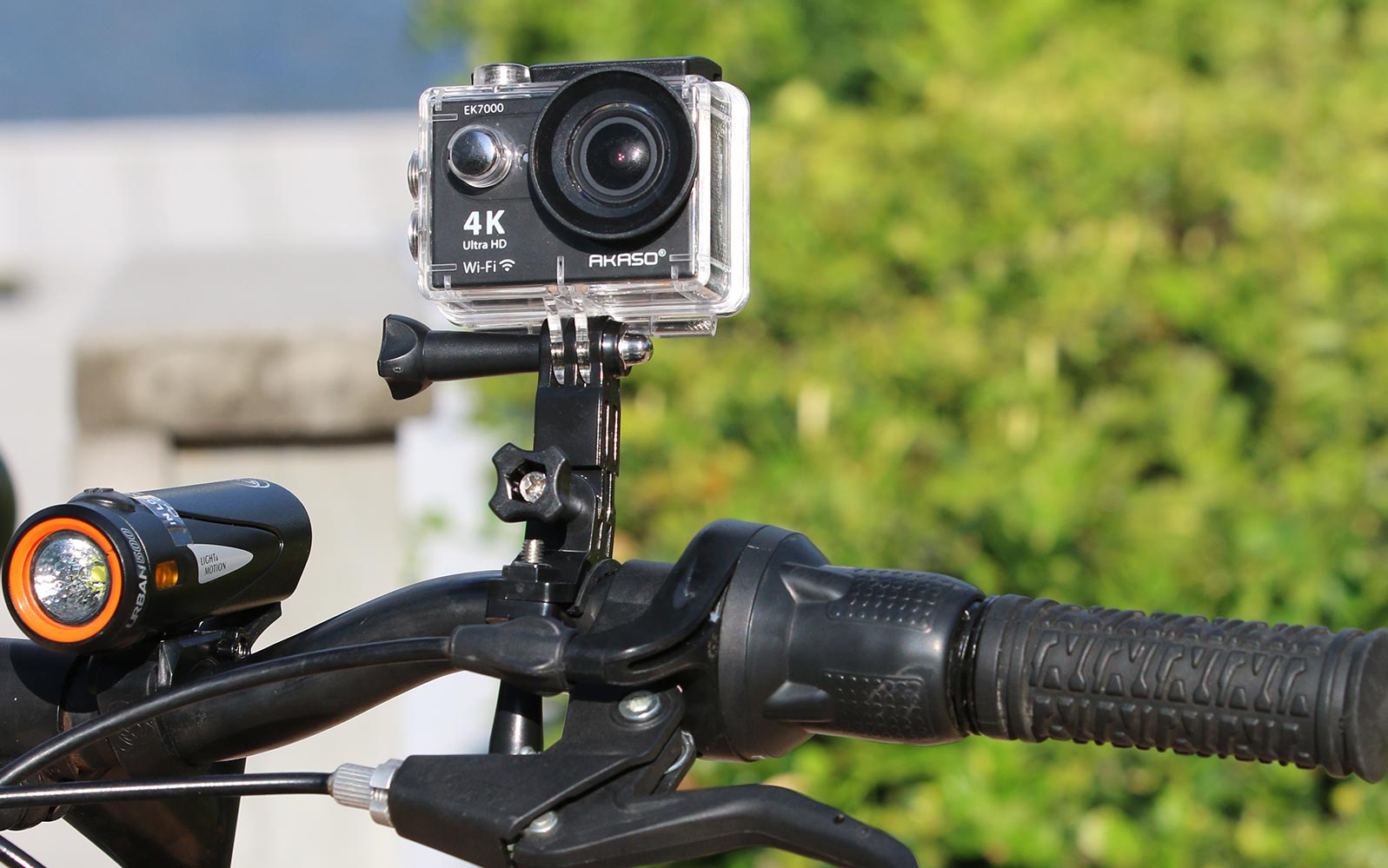Tom's Guide Verdict
Akaso EK7000 is a relatively underwhelming inexpensive action camera.
Pros
- +
Very inexpensive
- +
4K resolution, 1080p/60 and 720p/120
- +
Responsive Wi-Fi remote
- +
Comes with lots of accessories
- +
Time-lapse and burst-photo functions
Cons
- -
Muffled audio in the case
- -
Not waterproof without plastic housing
- -
No image stabilization
- -
Can't change field of view
Why you can trust Tom's Guide
GoPro's industry-leading cameras are known for their image quality and ease of use, but the company's least expensive camera costs $199 and tops out at a resolution of 1440p. Enter the Akaso EK7000, one of dozens of inexpensive GoPro clones that cost less than $100 and can record video at 4K. But although it looks good on paper, its low cost comes with a lot of compromises.
Design
The Akaso EK7000's design is quite generic. I use that word because another camera I've tested (the Drograce WP350) has the exact design with only minor differences in the user interface. Another similar model, the CamPark Xtreme I+, has a slightly modified version of this design. For example, the Akaso uses a red light on the top to indicate the power is on, and slowly blinks when recording; the Drograce uses a blue light for the same function. Of course, all of these cameras owe their design to GoPro.
All of these cameras have four buttons that control their functions. The shutter button on the top of the camera starts and stops recordings and is used to take pictures. It also acts as the "enter" button while browsing in the settings.

On the front of the camera is a mode button, which cycles between video, photo, burst, time lapse and settings. It also performs the function of a "back' button, as well as a power button to turn the camera on and off.

Finally, a set of up and down buttons is used to cycle through options in the settings. When the camera is in photo or video modes, it will open the gallery function with two options, one with photos and one with videos.
On the back of the camera is a built-in screen, but it resembles older generations of GoPro that were not touch-enabled.
MORE: Best 360-degree Cameras
Unlike the last two generations of GoPros that have a sealed body, which protected them from water and debris, the Akaso action camera and the other similar models are not waterproof without their housing.
Ease of Use
Having recently purchased a GoPro Hero 5 Black, I've gotten accustomed to the functionality of its touch screen, though early-generation GoPros used a similar interface and button configuration to the one found on the Akaso. Because the camera requires a waterproof housing, I found myself having to really push down to ensure the button press registered my intended action.

However, the camera comes with a Wi-Fi remote that can be enabled in the settings quite easily, and that seemed to be natively paired. Once enabled, the two-button remote can start and stop video as well as take still photos. Conveniently, the camera automatically switches modes from camera to video when the alternate button is pressed.
Because these inexpensive cameras all still use a waterproof housing compared to the GoPro, I found myself having to push down fully to ensure the button press registered my intended action.
The Akaso's menu architecture is mostly straightforward, but is certainly not as easy to use as the GoPro's, which more elegantly groups settings around the edges in virtual "buckets." As I dug into the Akaso's menus, I found that some items would be presented as an option but when selected, there were no other options from which to choose.
In numerous cases, items in menus are not arranged in an intuitive fashion. For example, the first menu item is video resolution. When you enter the menu, it lists resolutions in the following order: 1080P (60 fps), 1080P (30 fps), 4K (25 fps), 2.7K (30 fps), 720P (120 fps) and finally, 720P (60 fps). In order of quality, however, 4K and 2.7K should come before 1080p.
MORE: Best Video Editing Software Under $100
Switching between resolutions while filming isn't the quickest process, either. Unlike other budget cameras, such as the Drograce, you can't change the field of view of the Akaso's camera.
Video Quality
With GoPro and Sony action cameras leading in quality and innovation, both come with a somewhat premium price tag of between $200 and $400. The Akaso EK7000, costing roughly one-sixth the price in some cases, does a decent job with video, so long as you temper your expectations.
Overall, video shot on the Akaso was fairly good, unless there was a lot of motion, which made the footage quite shaky. The gold sunset against the side of the pool really popped in the frame, but even moving the camera slowly caused the tiles on the side of the pool to fade in sharpness.
Additionally, unless I was in a well- lit part of town, the majority of the footage at night was mostly useless due to an abundance of noise and lack of detail in the frame.
Akaso's camera lacks image stabilization — a feature found on GoPros — which means that every bump in the road or shaky motion in a user's hand will be reflected in the footage.
In some cases, the footage I captured while riding my bike was almost unwatchable due to its shakiness. There are video-editing programs and accessory gimbals that can help with this, but if you're buying a $70 action camera, a gimbal would most likely end up costing three times as much as the camera itself.
The Akaso shoots 4K at 25 frames per second (fps) versus the 30 fps that the Drograce offers, but my recommendation is to forget about 4K and shoot in either 1080P or 720P at 60 fps. There are no other options for this resolution, because both the Akaso and Drograce models just do not have the horsepower needed to process such a large and demanding video file. While I didn't notice it because of the plastic housing, these cameras can also get somewhat warm when shooting in 4K.
Finally, I found that even if the plastic housing looked clean, the lens picked up fingerprints quite easily. In more than one video sample, there is a white haze, likely due to the oil from my fingers on the plastic. If you do not plan on jumping in a body of water, try to use the frame mount to limit the surfaces that an image needs to pass through.
Audio Quality
When used with its waterproof housing, the Akaso's audio quality (as well as the Drograce and the Campark) was muted and muddled, even when talking directly to the camera. If you are not planning on getting the camera wet, you can use the frame-only accessory that clips around the camera.
However as a note, the frame accessory uses two, ¼-inch threaded tripod screw mounts (one on the top and one on the bottom) to attach to other accessories, while the waterproof housing uses GoPro-styled, interwoven plastic tabs that secure with a screw. It shouldn’t be an issue with either as a conversion accessory is provided to and from each mount style to the other style - it just adds one more accessory.
Taking the camera out of the hard case improved the quality of the audio, but it also became more susceptible to wind noise.
MORE: Top-Rated Waterproof and Rugged Cameras
To test the audio, I talked directly into the camera, while holding it about 12 inches from my mouth. I found there was a huge difference with and without the waterproof housing. With the case off, audio quality certainly was not great, but it was understandable. With the housing on, it was almost inaudible.
Bottom Line
Compared to the video recorded for our review of the Editor's Choice GoPro Hero 6 Black, the Akaso falls short in almost every way: image stabilization, color accuracy, audio quality and ease of use. However, at essentially one-sixth of the price, the Akaso offers a decent alternative for someone on a tight budget, especially if you are going to keep the camera mostly still. On the plus side, the Akaso EK7000 does come with quite a few accessories, making it an pretty good value.
Despite a top resolution of 1080p, the Kodak PixPro SP1 ($179) is a better option, especially if you plan on shooting footage at night. But if you're looking to spend less than $100, the Akaso is worth considering.
Credit: Charles Cohen/Tom's Guide
Adam Weissman is a freelance writer and an outdoor aficionado who has reviewed a number of action cameras and accessories for Tom's Guide. In addition to several GoPro cameras, he has also tested budget action cameras and 360 cameras from a variety of manufacturers, and has tested them in a variety of conditions.
-
moozoo928 Hey guys I'm comparing a Hyundai to a Mercedes and guess what the Hyundai is a lower quality car because the Mercedes has better features and costs much, much more. The most useless review I've ever read. Do us a favor and jump off a cliff.Reply

